Diamond Glossary: 11 Essential Diamond Terms
What’s a cut, why is a certification important, and how can we tell whether a diamond has “fire”? Here are 11 basic and essential diamond terms in alphabetical order.
Brilliance: a term used to refer to the brightness of a diamond. Cut (explained below) is the most important factor in achieving brilliance in a diamond.

Carat Weight: The carat is a unit of mass equal to 200 mg used to measure gemstones and pearls. Basically, diamond carat weight measures how much a diamond weighs. Carat weight is one of the 4Cs of Diamond Quality – a universal method created by the GIA (The Gemological Institute of America) to evaluate diamond quality. Each carat can be subdivided into 100 “points”, which allows precise measurements to the hundredth decimal place. Stones greater than 1 carat are described in carats and decimals. A 1-carat diamond is comprised of 100 points; therefore, a 50-point diamond weighs 0.50 carats, and a diamond which weighs 0.25 carats can be described as a 25-pointer. The majority of diamonds used in fine jewelry weigh one carat or less.
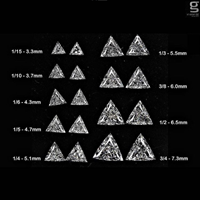
Clarity: Since they are formed deep within the earth and under extreme heat and pressure, all diamonds contain flaws. Diamond clarity, one of the four Cs of diamond grading, refers to the degree to which these flaws or imperfections – either inside the diamond (called inclusions) or on its surface (called blemishes) – are present. Inclusions can be crystals inside the stone, or tiny cracks that make the diamond appear cloudy or “whitish”. Almost all diamonds are graded based on the 11 point diamond clarity scale created by the GIA. The number of flaws in the diamond, as well as their size, relative location, orientation and visibility affect the clarity of the diamond and therefore – the stone’s grading. The GIA diamond clarity scale runs from Flawless (the rarest kind) to Included (in which inclusions are defined as “obvious” under magnification). The scale has six categories, divided for a total of 11 specific grades. They are as follows:
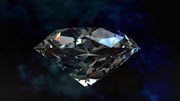
Certification: A diamond certificate, also called a diamond grading report, provides documented proof that the stone has undergone professional examination by independent gemologists, unconnected with either the seller or the buyer. A certificate includes a summary of the diamond’s dimensions, clarity, cut grade (in case of round diamonds), polish, and symmetry as well as other characteristics. There are several reputable grading agencies around the world, particularly in the United States and Europe. These include the Gemological Institute of America (GIA), American Gemological Society (AGS), European Gemological Laboratory (EGL), Diamond High Council (HRD), International Gemological Institute (IGI) and International Confederation of Jewelry, Silverware, Diamonds, Pearls, and Stones (CIBJO).
Color: Natural diamonds occur in a wide range of colors – white, gray, blue, yellow, orange, red, green, pink, purple, brown, and black. Although some colored diamonds, like blue and pink fancy color diamonds, are relatively rare and therefore highly valued, usually the contrary holds: colored diamonds contain impurities or defects that cause the colorations and are therefore valued by how closely they approach colorlessness; in other words, the less color there is, the higher their value. A chemically pure and structurally perfect diamond has no hue, or color, and is therefore of a higher value. According to the GIA, Most diamonds you’ll find in jewelry stores run from colorless to near-colorless, with slight hints of yellow or brown.
Culet: The grading of a diamond is based on several factors – from clarity to weight and cut, as well as color. The diamond culet – the tiny area at the base of the stone’s pavilion - also affects a diamond grading and ultimately its worth. The culet can be a point or a small facet that sits parallel to the table. When a diamond is sent for certification, expert gemologists view the diamond face up to determine the culet's size, and from the side to determine the angle of the culet
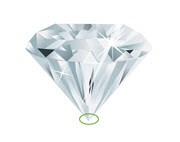
Cut: In contrast to what many people may think, cut refers not to a diamond’s shape, but to its proportions, symmetry and polish. It is often regarded as the most crucial of the diamond 4Cs (which also include color, clarity and carats) since a diamond cut has the biggest influence over how a diamond looks; cut grade is all about how well a diamond's facets interact with light. Polish and symmetry are two important aspects of the cut: polish refers to the smoothness of the diamond's facets, and the symmetry describes the alignment of the facets.
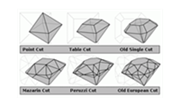
Fluorescence: Diamond fluorescence is the effect that ultraviolet light has on a diamond. Under UV rays, fluorescence is the visible light emitted by the diamond when it is exposed to UV rays. Although relevant to diamond grading, diamond fluorescence has no bearing on most people’s choice when they set out to buy a diamond. For most diamonds, the strength of fluorescence has no widely noticeable effect on appearance, and the average person cannot distinct between a diamond with fluorescence and a diamond without it. Moreover, fluorescence has no bearing on the structural integrity of a diamond; in other words, fluorescence isn’t “bad” for a diamond, and does not weaken it in any way.
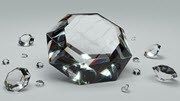
Girdle: The girdle is a diamond’s outermost edge, where the top of the diamond (crown) meets the bottom of the stone (pavilion). When you look at a polished diamond in its setting or from a profile view, the girdle is the widest part of the stone – just look for the portion of the stone that makes contact with the setting itself.
Inclusion: An internal flaw in the diamond. The position, size, number, color, and reflectivity of a diamond's inclusions impact its appearance and value. Diamonds graded by the GIA and other labs have their clarity rated on a scale of F (flawless) to i3 (significant inclusions).
Shape: The shape of a diamond is not the same as a diamond cut, although many confuse the terms. The shape refers to the appearance of the diamond, while the cut is the design chosen when polishing a diamond, and refers to the diamond’s ability to reflect light. Shape, therefore, is not part of the 4Cs, but is nevertheless crucial when selecting a diamond. The most popular diamond shapes are variations on the round, square, rectangular, pear-shaped, oval, heart-shaped diamonds and marquise.

